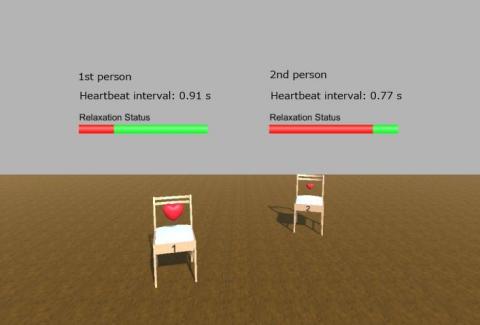Healthcare komt thuis – grote upgrade voor radargeleide medische monitor van Kyoto University en Panasonic Corporation
KYOTO, Japan & OSAKA, Japan–(BUSINESS WIRE)– Begin 2016 ontwikkelden van het Innovatiecentrum van Kyoto University en Panasonic Corporation een radargeleid apparaat dat vitale lichaamsfuncties direct en nauwkeurig meet. Dit product is nu nog beter geworden.
De sensor combineert een radarsignaal met algoritmes voor analyse. Zodoende wordt gemeten hoe het lichaam beweegt terwijl het hart tikt. Bewegingen van het lichaam variëren aanzienlijk, dus softwarefilters isoleren de geringste bewegingen.
Bringing Healthcare Home – The Radar Health Monitor That Kyoto University’s Center of Innovation and Panasonic Developed Gets a Major Upgrade |
|||||
|
How am I feeling? Ask my house KYOTO, Japan & OSAKA, Japan–(BUSINESS WIRE)– In early 2016, researchers from Kyoto University’s Center of Innovation and Panasonic Corporation developed a radar-based device that could instantaneously and accurately measure the body’s vital signals — and now they’ve made it even better. This press release features multimedia. View the full release here: http://www.businesswire.com/news/home/20171001005097/en/  The heartbeat intervals of several people can be simultaneously measured in real-time (Graphic: Business Wire) The heartbeat intervals of several people can be simultaneously measured in real-time (Graphic: Business Wire)
The sensor combined a radar with signal analysis algorithms to measure how the body moves as the heart beats. Body movements vary considerably, so the software filters isolate just the heart’s minute motions. “Measuring respiration and heart rate — without attaching cumbersome wires to the body — will greatly benefit modern medicine and home healthcare,” explains Toru Sato, lead researcher and Kyoto University professor of communications and computer engineering. “Moreover, it will reduce stress by not subjecting the individual to a feeling of being monitored.” While the original technology showed promise, there was a major problem: the prototype was the size of a microwave oven. To improve prospects for implementation, the group shifted their focus toward refining the device. “After extensive testing we achieved great improvements,” continues Sato. “The device now utilizes the 79 GHz frequency band, instead of the previous 60 GHz. We also incorporated CMOS semiconductors. As a result, range and resolution improved, and it’s now only about one tenth the size — as big as a smoke detector.” Moreover, because of the new frequency band, the sensor can now measure the heart rates of multiple individuals in the same room, separated by as little as 7.5 cm (about 3 inches). The team hopes that the improved specs will allow such sensors to be installed in a variety of household appliances — such as lighting — to safely monitor the vitals of residents. “This technology holds great promise for the future development of devices to monitor health remotely,” concludes Sato. “We are currently considering test sites for observing the multiple applications of our sensor.” About Kyoto University Kyoto University is one of Japan’s and Asia’s premier research institutions, founded in 1897 and responsible for producing numerous Nobel laureates and winners of other prestigious international prizes. A broad curriculum across the arts and sciences at both undergraduate and graduate levels is complemented by numerous research centers, as well as facilities and offices around Japan and the world. For more information please see: http://www.kyoto-u.ac.jp/en. About Panasonic Panasonic Corporation is a worldwide leader in the development of diverse electronics technologies and solutions for customers in the consumer electronics, housing, automotive, and B2B businesses. Celebrating its 100th anniversary in 2018, the company has expanded globally and now operates 495 subsidiaries and 91 associated companies worldwide, recording consolidated net sales of 7.343 trillion yen for the year ended March 31, 2017. Committed to pursuing new value through innovation across divisional lines, the company uses its technologies to create a better life and a better world for its customers. To learn more about Panasonic: http://www.panasonic.com/global. Source: http://news.panasonic.com/global/stories/2017/50824.html Related Links [Video] The Radar Health Monitor That Kyoto University’s Center of Innovation and Panasonic Developed – Technology Introduction by Professor Toru Sato About Panasonic: Panasonic Technology & Design: Panasonic at CEATEC Japan 2017 Kyoto University |
|||||
